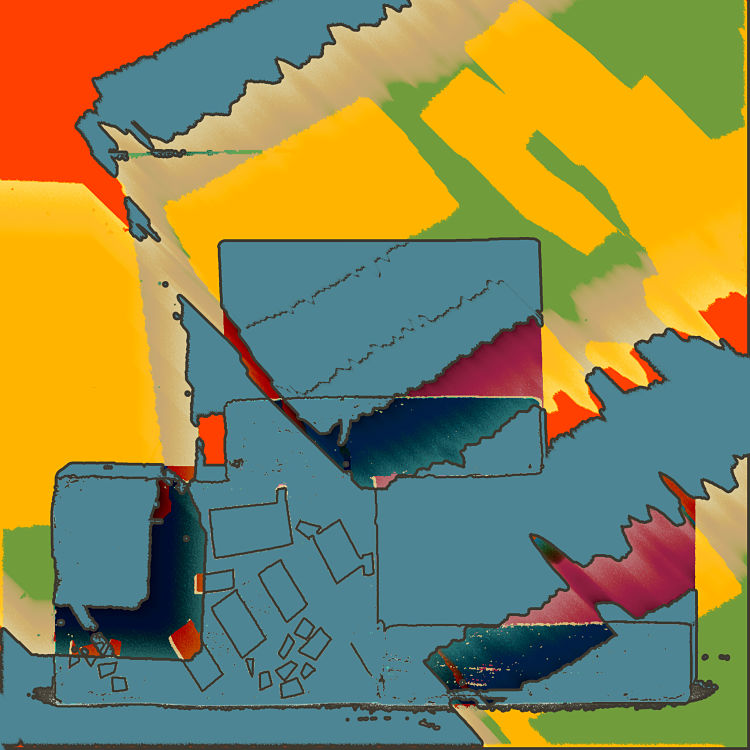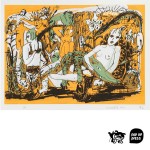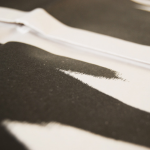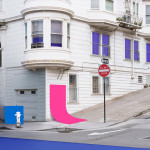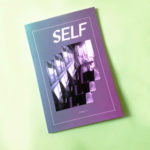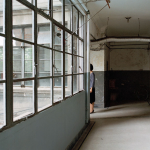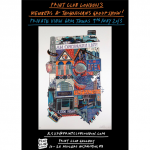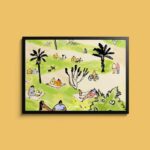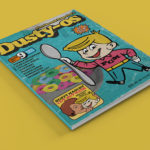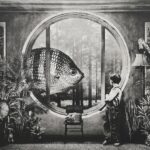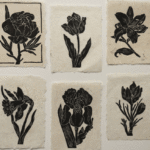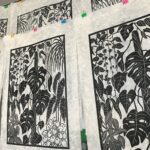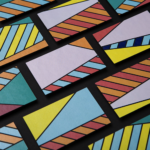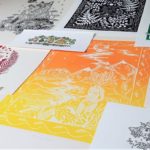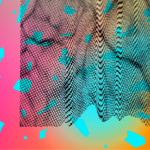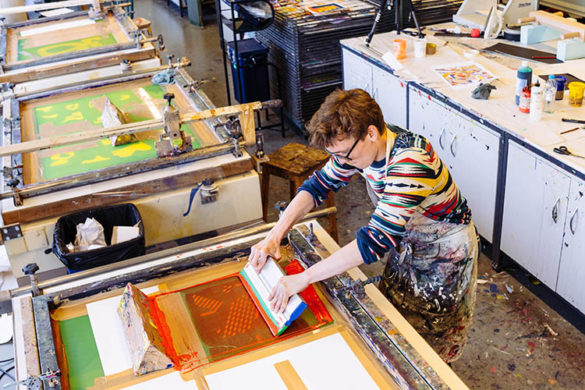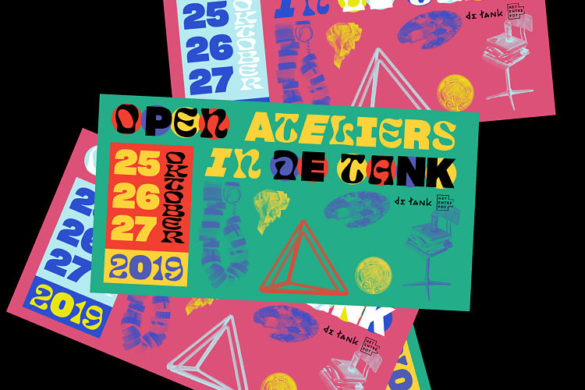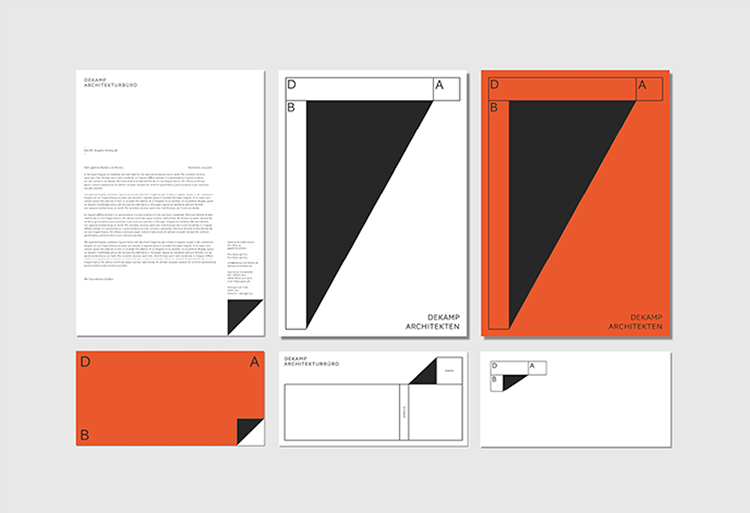I’ve been a fan of Grant Gasser’s work for a while; not least because whenever we chat, the majority of the phone call is made up of rambling tangents rather than just talking shop. Those tangents are often related to music: like many graphic designers, Gasser’s practice isn’t just about visual art. He also creates music under the alias Jerry Attrick. What’s not to love about that sort of wordplay?
The story goes that Jerry Attrick is a “disgraced astronautical engineer” who’d been presumed dead since “shoddy workmanship” led to his space craft crashing a decade earlier. Having spent a decade floating past the earth’s orbit in a coma, on awakening he’s been remarkable productive, churning out music and paintings.
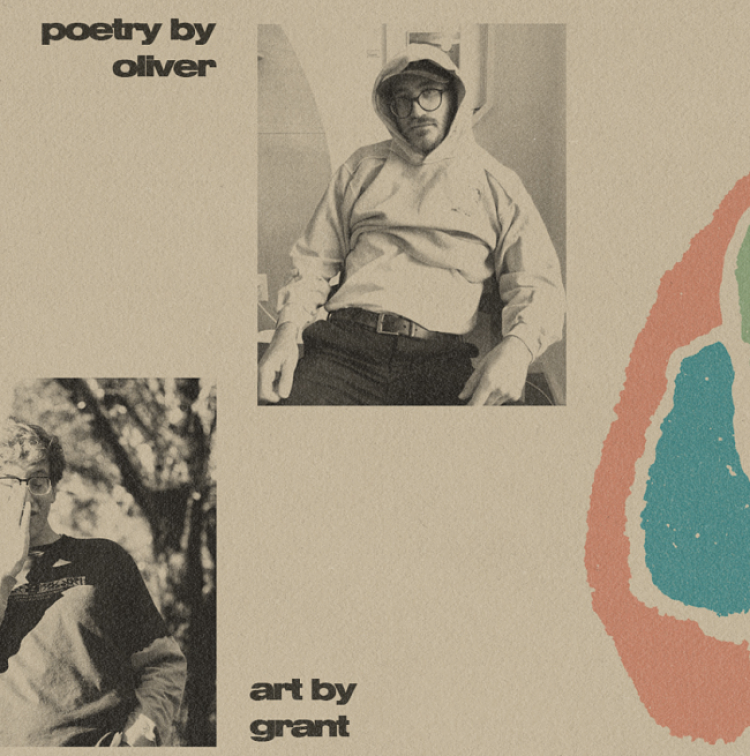
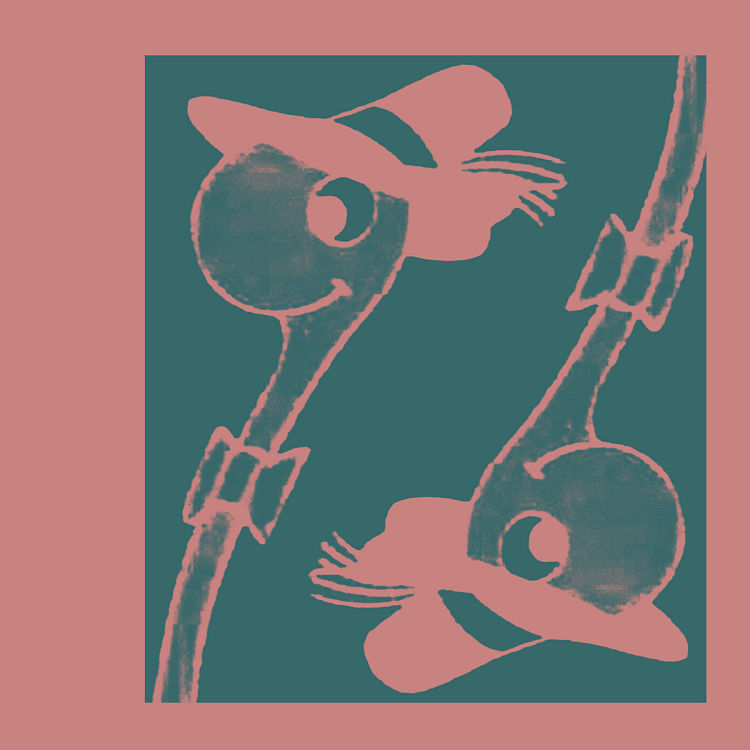 His sounds are crafted of intercepted “intergalactic robot conversations”, apparently, which are manipulated into pop music that “exposes the sentimental nostalgia Jerry feels for his past life while embracing his new one.” His paintings, meanwhile, are “created from intensely layered space shrapnel and found on his wanderings through the cosmos, mimic the tangible nature of his experience and the hands-on character of his past life.”
His sounds are crafted of intercepted “intergalactic robot conversations”, apparently, which are manipulated into pop music that “exposes the sentimental nostalgia Jerry feels for his past life while embracing his new one.” His paintings, meanwhile, are “created from intensely layered space shrapnel and found on his wanderings through the cosmos, mimic the tangible nature of his experience and the hands-on character of his past life.”
Having just finished a new EP, Gasser’s come to realise the extent to which his music and art/design practice are “connected and paralleled to one another,” he says, adding that the record “ties ideas of sampling and reconstruction back to my visual art.”
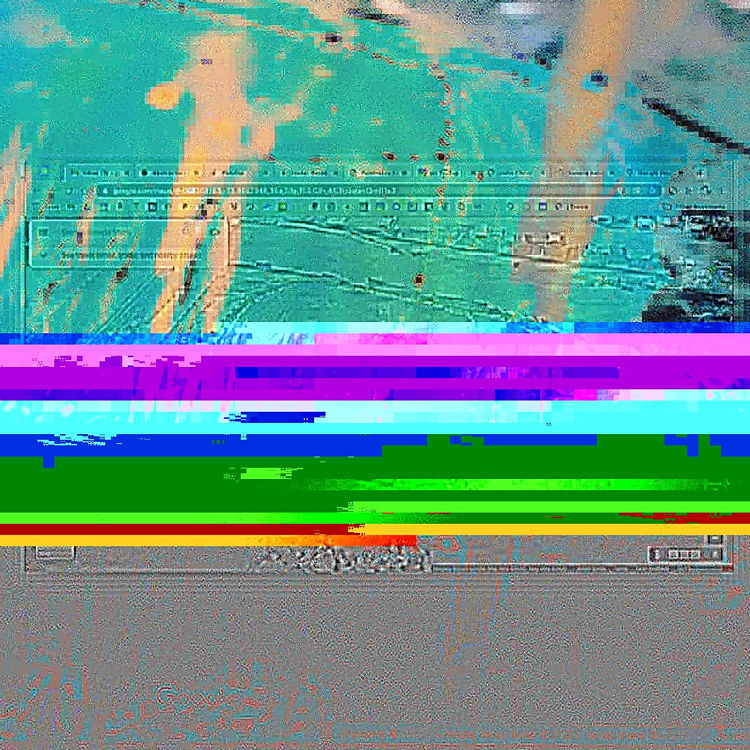 The album, titled Fantasia, was released last year; and draws on Gasser’s graphic design practice not only in the imagery that accompanies it, but in the thinking behind its concept. “Being trained as a graphic designer, it is very easy for me to value perfection and visual beauty over honesty and vulnerability,” he says. “In producing electronic music, I find it very tedious to get the sounds I want while still setting up files and exporting them the proper way.”
The album, titled Fantasia, was released last year; and draws on Gasser’s graphic design practice not only in the imagery that accompanies it, but in the thinking behind its concept. “Being trained as a graphic designer, it is very easy for me to value perfection and visual beauty over honesty and vulnerability,” he says. “In producing electronic music, I find it very tedious to get the sounds I want while still setting up files and exporting them the proper way.”
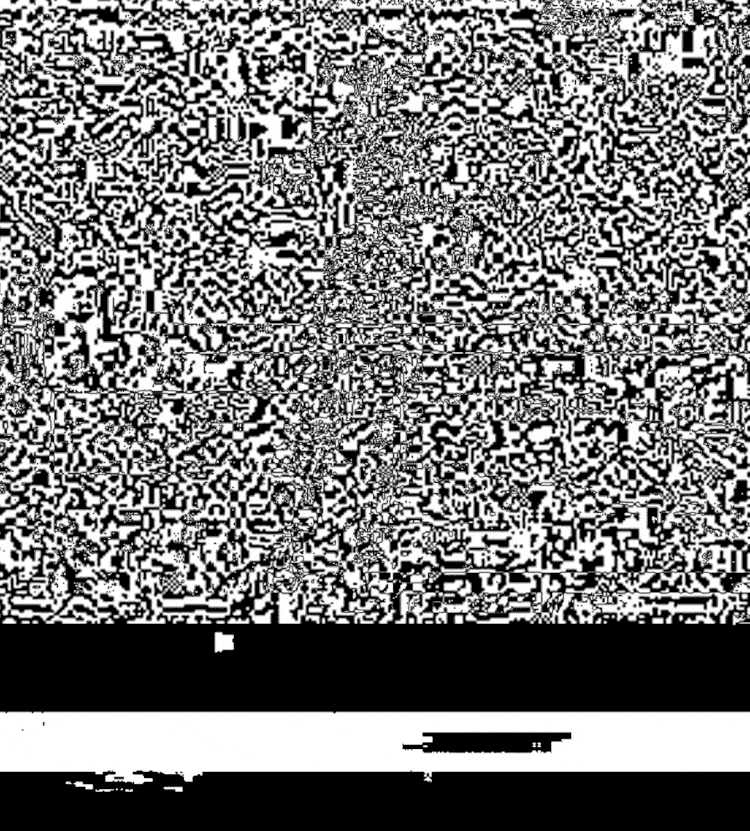 Since he’s self-taught when it comes to music production, he’s well aware that many of the steps in his process aren’t necessarily the established, “correct” ways of doing things. But this relative naivety has been a boon in many ways: “I have discovered sounds that are new to me because of these many mistakes,” he says. “Luckily, that mindset has bled over into my visual art and allows me to let these errors occur. It has been weird trying to unteach some of the technical side of design to let mistakes happen, but all in all I feel it makes a more holistic and vulnerable process.”
Since he’s self-taught when it comes to music production, he’s well aware that many of the steps in his process aren’t necessarily the established, “correct” ways of doing things. But this relative naivety has been a boon in many ways: “I have discovered sounds that are new to me because of these many mistakes,” he says. “Luckily, that mindset has bled over into my visual art and allows me to let these errors occur. It has been weird trying to unteach some of the technical side of design to let mistakes happen, but all in all I feel it makes a more holistic and vulnerable process.”
The cover art is a prime example of this: he created it while trying to export too many files to his phone in one go. That meant that the image got compressed and configured in a strange way which exposed some of the raw colour values and textures of the file itself. “I felt it was fitting to use this instead of what the original image was, as it kept true to the glorification of the mistakes that come with working digitally,” says Gasser.
Another music-based project to have emerged last year during lockdown was the Jerry Attrick Virtual Gallery. Gasser found himself feeling “more isolated than I have ever felt before (like most of us),” and sought out connections with those close to him in ways that he hadn’t before. He contacted his younger brother Chase, who’s currently studying architecture at the University of Cincinnati with the idea of working together on a project to make a virtual experience in which he could showcase his “within the world of Jerry Attrick.”
Chase came up with the idea of 3D modelling a gallery and recording a video of a walkthrough, to make a more accessible viewing experience which had a defined narrative beginning and end point. Gasser then improvised a synth track to use for the piece while the visual were being rendered. “The goal here was to further solidify the persona of Jerry Attrick as an extension of myself,” he explains.
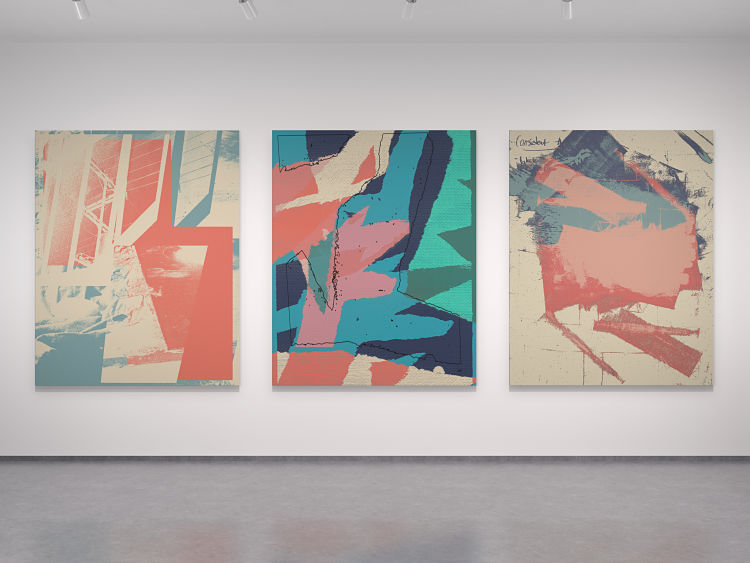
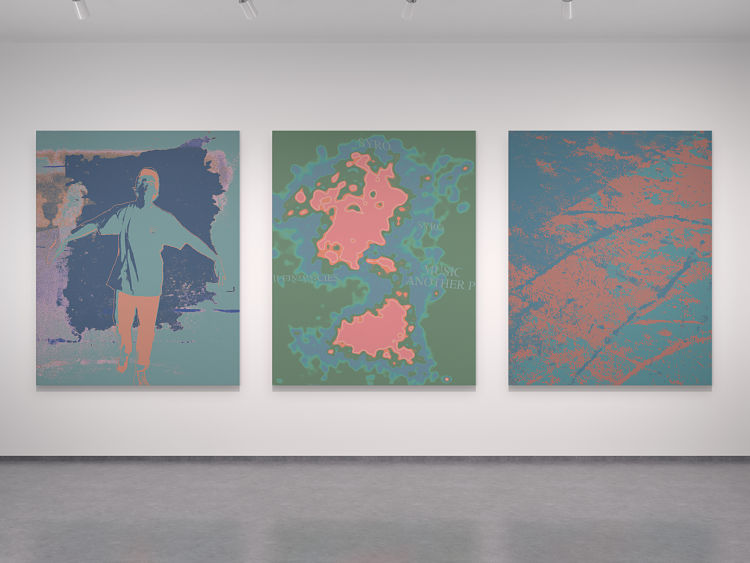 Outside of Jerry, Gasser works across art, design, film and photography. Last year, he worked as a design intern for Third Man Records, and has also worked for the First Art Museum in Nashville, and as a studio assistant at Isle of Printing and for LA-based designer Robbie Simon. In 2018, he designed the art book Mouse Dog Bird of original pastel drawings accompanied by poems by Oliver Burell; and the following year published the zine Hebel, which used its design to suggest a perspective in which vanity (or “hebel” in Hebrew) is “less about narcissism and more about ephemerality.”
Outside of Jerry, Gasser works across art, design, film and photography. Last year, he worked as a design intern for Third Man Records, and has also worked for the First Art Museum in Nashville, and as a studio assistant at Isle of Printing and for LA-based designer Robbie Simon. In 2018, he designed the art book Mouse Dog Bird of original pastel drawings accompanied by poems by Oliver Burell; and the following year published the zine Hebel, which used its design to suggest a perspective in which vanity (or “hebel” in Hebrew) is “less about narcissism and more about ephemerality.”
You might like...
- Autobahn - November 26, 2021
- Alphabetical - November 12, 2021
- SOFA Universe - November 8, 2021

